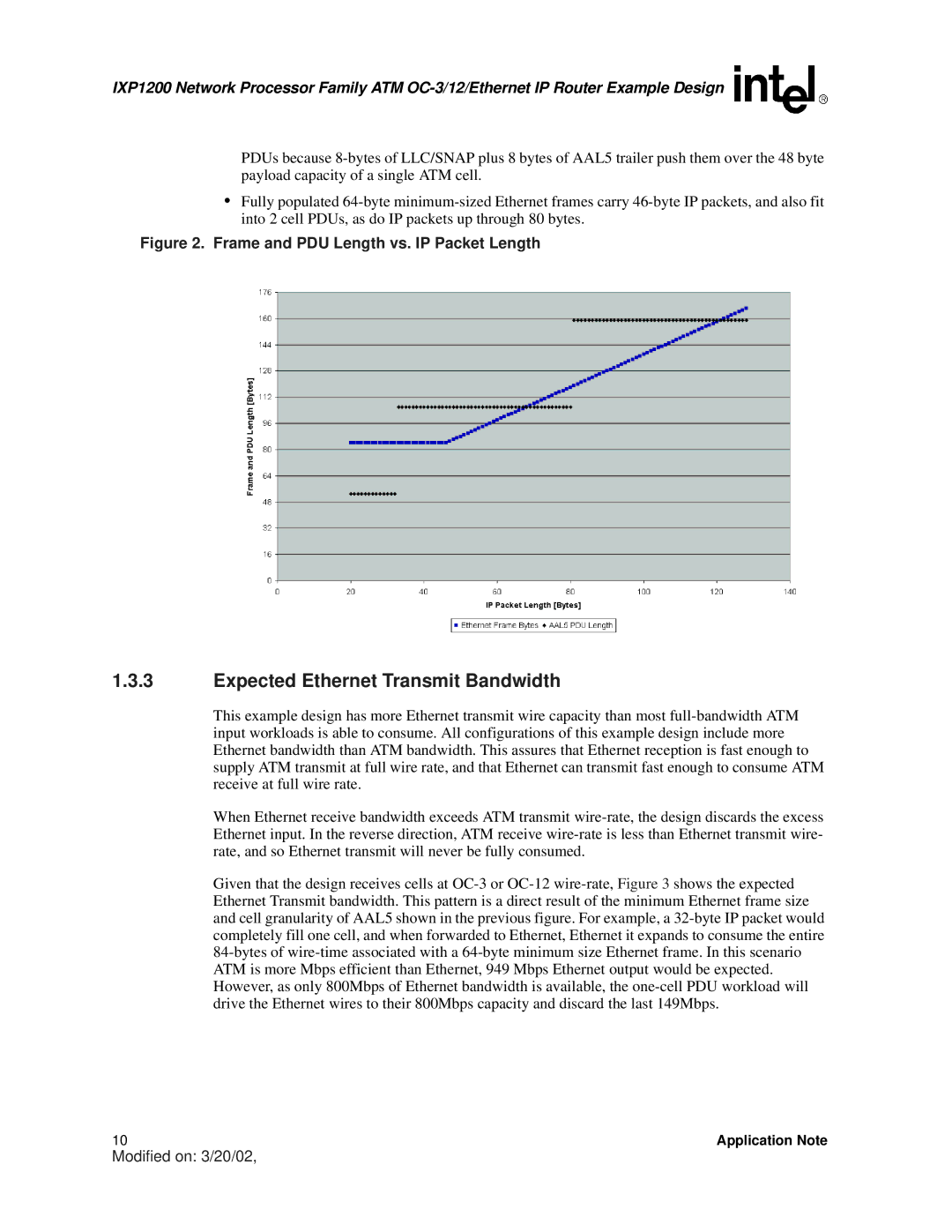
IXP1200 Network Processor Family ATM OC-3/12/Ethernet IP Router Example Design
PDUs because 8-bytes of LLC/SNAP plus 8 bytes of AAL5 trailer push them over the 48 byte payload capacity of a single ATM cell.
•Fully populated 64-byte minimum-sized Ethernet frames carry 46-byte IP packets, and also fit into 2 cell PDUs, as do IP packets up through 80 bytes.
Figure 2. Frame and PDU Length vs. IP Packet Length
1.3.3Expected Ethernet Transmit Bandwidth
This example design has more Ethernet transmit wire capacity than most full-bandwidth ATM input workloads is able to consume. All configurations of this example design include more Ethernet bandwidth than ATM bandwidth. This assures that Ethernet reception is fast enough to supply ATM transmit at full wire rate, and that Ethernet can transmit fast enough to consume ATM receive at full wire rate.
When Ethernet receive bandwidth exceeds ATM transmit wire-rate, the design discards the excess Ethernet input. In the reverse direction, ATM receive wire-rate is less than Ethernet transmit wire- rate, and so Ethernet transmit will never be fully consumed.
Given that the design receives cells at OC-3 or OC-12 wire-rate, Figure 3 shows the expected Ethernet Transmit bandwidth. This pattern is a direct result of the minimum Ethernet frame size and cell granularity of AAL5 shown in the previous figure. For example, a 32-byte IP packet would completely fill one cell, and when forwarded to Ethernet, Ethernet it expands to consume the entire 84-bytes of wire-time associated with a 64-byte minimum size Ethernet frame. In this scenario ATM is more Mbps efficient than Ethernet, 949 Mbps Ethernet output would be expected. However, as only 800Mbps of Ethernet bandwidth is available, the one-cell PDU workload will drive the Ethernet wires to their 800Mbps capacity and discard the last 149Mbps.

